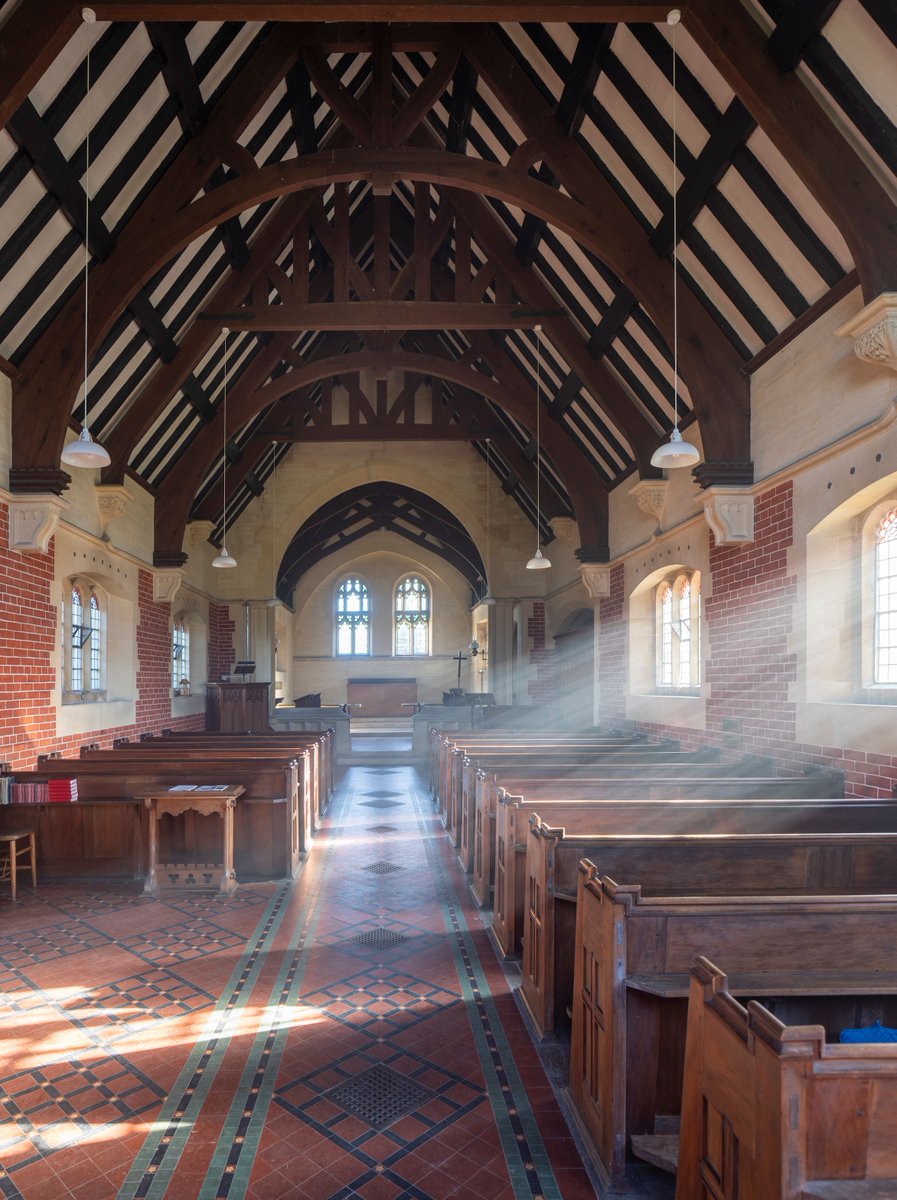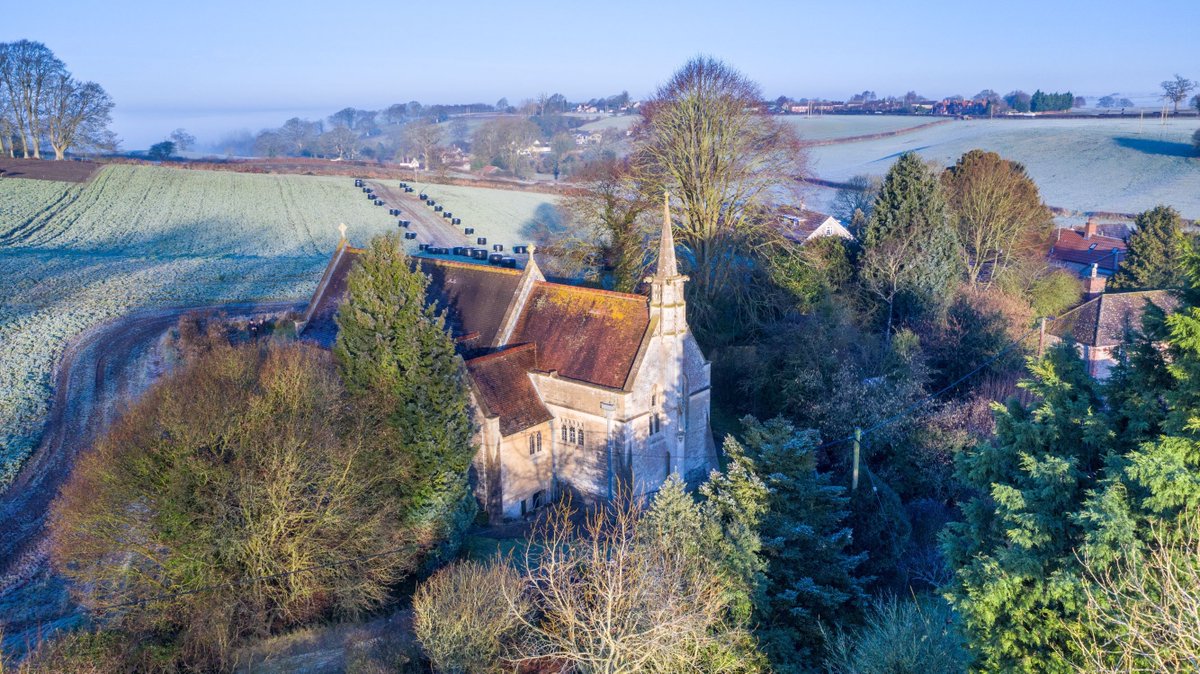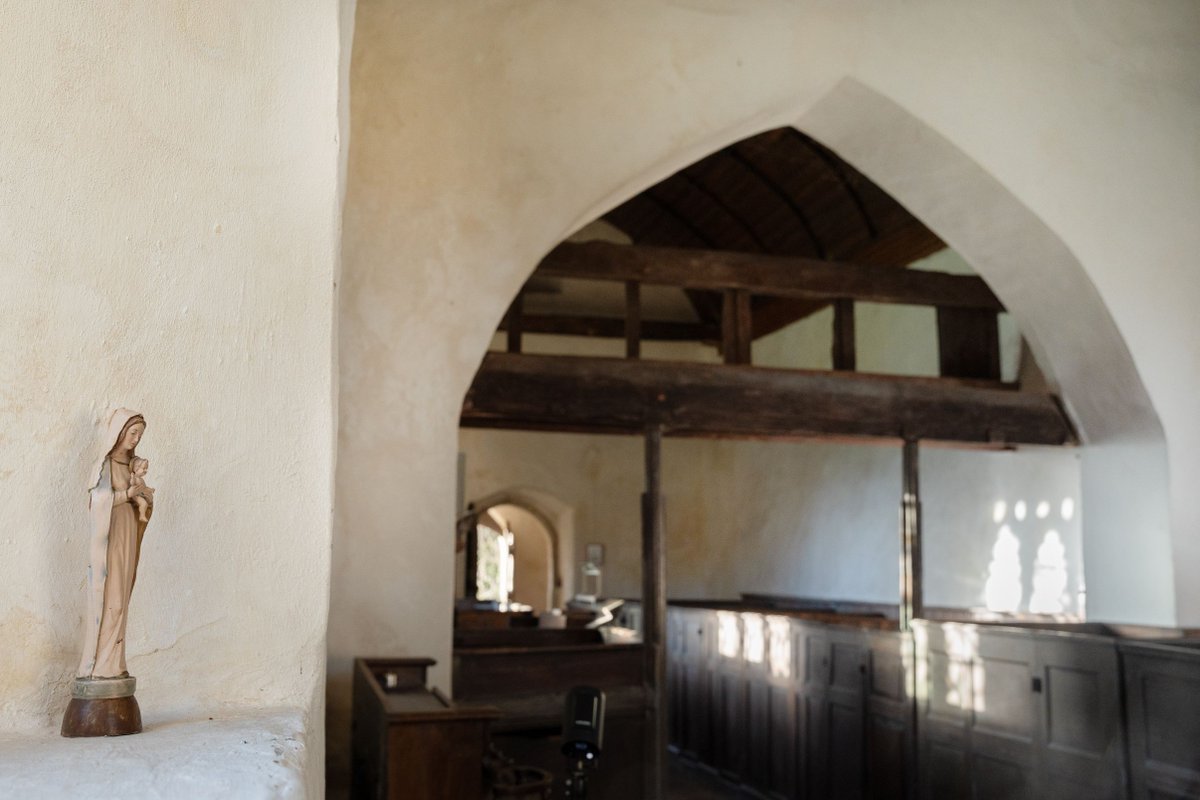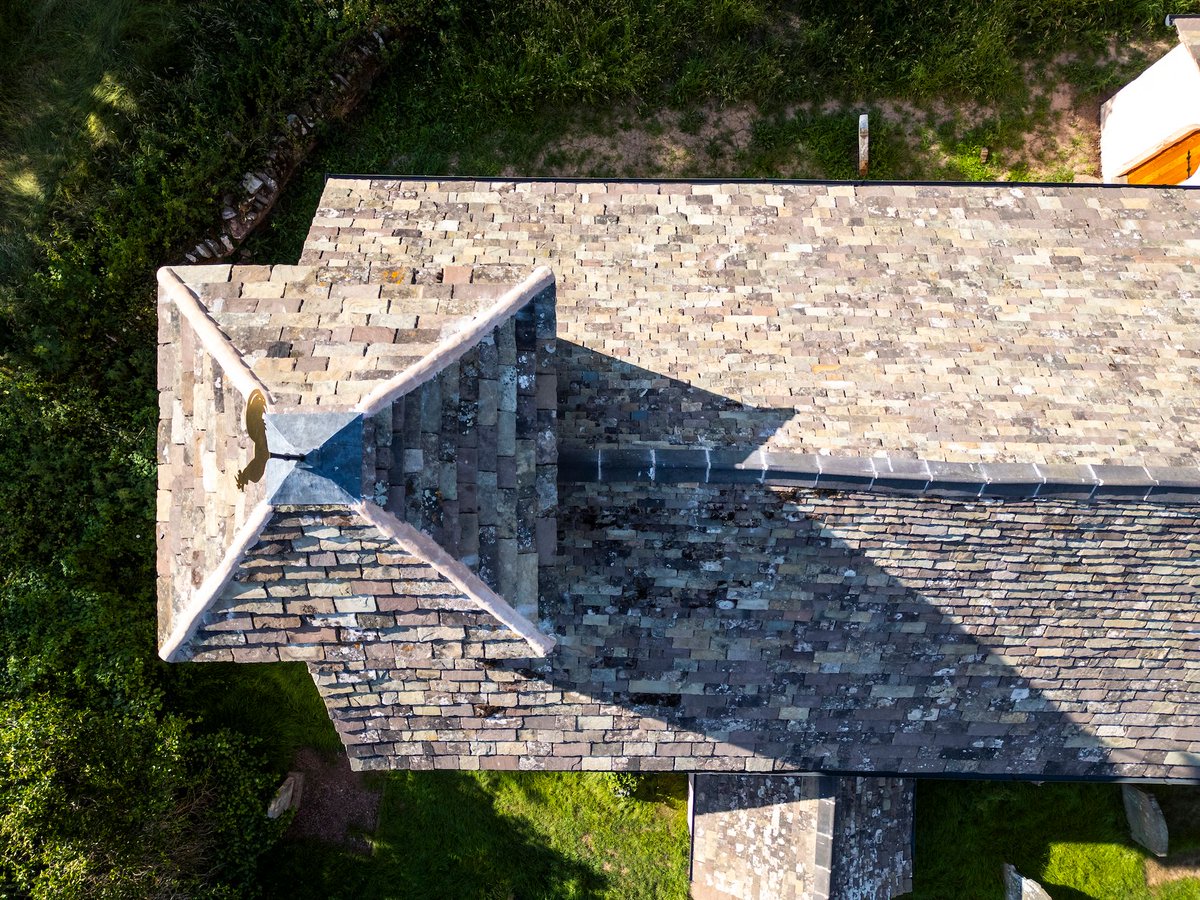In splendid isolation on the Llyn Peninsula, St Mary’s, Penllech overlooks the Irish Sea. A church has been here for over 800 years, serving generations of farming communities.
Its interior, where walls and woodwork are painted light grey, radiates simple beauty.
#thread
Its interior, where walls and woodwork are painted light grey, radiates simple beauty.
#thread

Mentioned in the Norwich Valuation of 1254, the church is medieval in origin; however, the font is the only substantial survivor of this age. It’s a roughly hewn basin of brown stone, painted white on the inner face, and sunk into the shaft beneath.
2/
2/

Most of what you see today is a rebuilding in 1840 by Samuel Jones. These rows of timber trusses, with their splayed shoulders, have an almost industrial feel. The closely spaced rafters almost resemble corrugated metal sheeting and lend a sort of warehouse vibe.
3/
3/

The 19th-century work was funded by a grant for re-pewing from the Incorporated Society for Promoting the Enlargement, Building & Repairing of Churches & Chapels. This accounts for the open benches filling the body of the church, while six box-pews gather at the east end.
4/
4/

The only flash of decoration is the sound-board (or tester) over the pulpit. It’s a moulded octagonal affair with a Greek key cornice. To the underside, a sun bursts with eight rays; unexpected extravagance in a simple church.
Read more here: friendsoffriendlesschurches.org.uk/penllech/
5/
Read more here: friendsoffriendlesschurches.org.uk/penllech/
5/

• • •
Missing some Tweet in this thread? You can try to
force a refresh






















